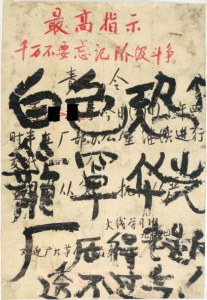
Ailing Economies Spur Changes
Not many people are aware that an ailing economy usually leads to major social upheavals which can change the course of history. Very often, all it needs is a tiny spark to light the bonfire, and a popular medium to viral it.
About a month ago, such a spark was ignited in the United States. It was the killing of black American George Floyd by a white police officer. Floyd’s death triggered demonstrations in over 2,000 US cities and around the world against police brutality and racism.
It is too early to say whether this Black Lives Matter movement will change the course of American history. One thing is certain. It was ignited against a background of an ailing economy brought down by the Covid-19 lockdown.
It’s actually more than that. The two-year-long trade war between China and the US also played a major role in weakening the global economy. So did the economic inequalities stemming from the bailout of the big bad firms from the days of the Lehman Brothers bankruptcy in September 2008.
In Floyd’s case, it was a photograph caught at the right time, and broadcast on the ever-popular social media channels. Li Zhensheng must have wished for such an opportunity to publicise his photographs.

Li Zhensheng: photographer during China’s Cultural Revolution
Mr Li was a newspaper photographer during China’s Cultural Revolution (1966-1976). It was a tumultuous time for China, when young idealistic Chinese destroyed the “four olds” in Chinese culture – old customs, habits, culture and thinking.
As a photographer, Mr Li captured many positive and negative photos of that period. The positive photos were used for propaganda. The negative ones he had to hide on pain of death. Only much later was he able to publicise his negative photos to the world, and to which he earned much accolade. A few days ago, at the age of 79, he passed away.
Every age has its popular medium. Today it’s the photograph and social media. During Mr Li’s time in China, the popular medium was the dazibao (大字报 “big-character posters”). These are a type of political writing, expressed on paper (in handwritten characters) and posted in public places as a forum for discussion and dissemination.

1966 dazibao stating “Rebel against the bourgeoisie” (“造资产階级反”)
Fifty four years ago in China, on the exact day that George Floyd died (25 May), a dazibao was put up at Beijing University denouncing school leaders. It was a historic moment. The message immediately went viral and spread to other universities and schools.
Soon after, Red Guards spurned classes and joined the nascent Cultural Revolution and vowed to die fighting to protect Chairman Mao Zedong.
China’s Cultural Revolution was preceded by another disaster – the Great Leap Forward (1958-1962). This was an effort to industrialise the country rapidly. To that end, uneducated farmers were forced from their farms to produce steel on a massive scale. The steel produced were inferior and mostly useless.
With the farms neglected, the Chinese economy hurled towards the Great Famine (1959-1961). There were reports of widespread cannibalism and malnutrition which caused the deaths of up to 40 million people.
Blamed for the disaster and concerned that he was losing relevance, Mao Zedong instigated his personal brand of Communism and tried to restore his prestige within the Party in 1966. That started another disaster.
Ten years later, at the end of the Cultural Revolution in 1976, China’s economy was shattered. It has been estimated that some hundreds of thousands to 20 million people died in the turmoil.
Traditional culture was damaged beyond recognition. China’s historical sites suffered devastating damage. Because they were considered as “old ways of thinking”, artifacts were seized, museums and homes ransacked for artworks and destroyed. Many historians compare the cultural damage done then to that done by the First Emperor of China.
Fortunately for China, the story does not end badly. For out of the turmoil and mess, an opportunity arose for a man who emerged to shape China’s rise from poverty to become one of the biggest economies today. He is Deng Xiaoping.
In November 1978, after Deng had stabilised China’s political turmoil, he visited his neighbours in Thailand, Malaysia and Singapore.

Deng Xiaoping visiting Singapore’s Lee Kuan Yew in Nov 1978
Apparently, Deng was very impressed with Singapore’s success and rapid development from its recent mess – its separation from Malaysia in 1965. Very soon after, he sent tens of thousands of Chinese to Singapore and countries around the world to learn from their experiences.
It seems inevitable that economies need upheavals for drastic changes to take place. For Singapore, the 1965 Separation was pivotal in steering the economy towards the positive alternative of the global marketplace, rather than to rely on the Malaysian hinterland.
For China, the social media of the day, the dazibao, and its numerous economic disasters have since led to a period of stability and prosperity.
For USA, only a few months’ ago, it was thought that President Trump would continue another term in office. But Covid-19, and the power of photos and social media, have revealed the weaknesses of the US economy and all the ridiculous inefficiencies of the Trump administration. It has certainly reduced Trump’s chances of another term.
Perhaps, out of this mess, a new leader or a transformed Trump might emerge who would be beneficial to the US economy. We have to wait and look out for the election results.



